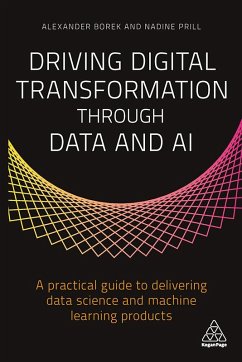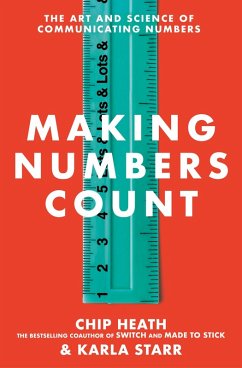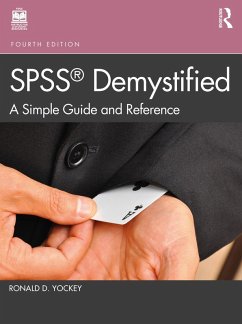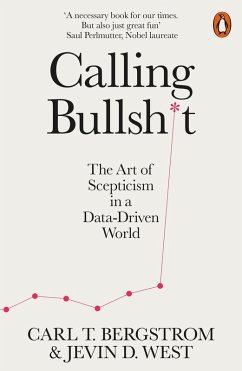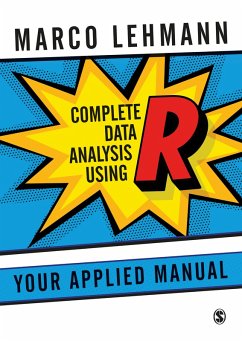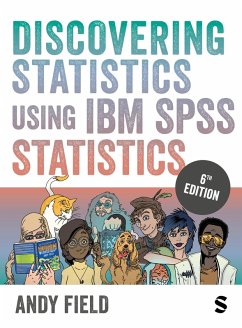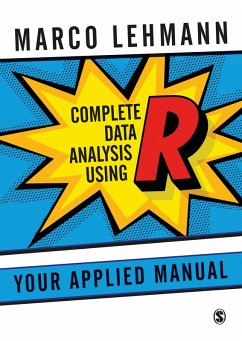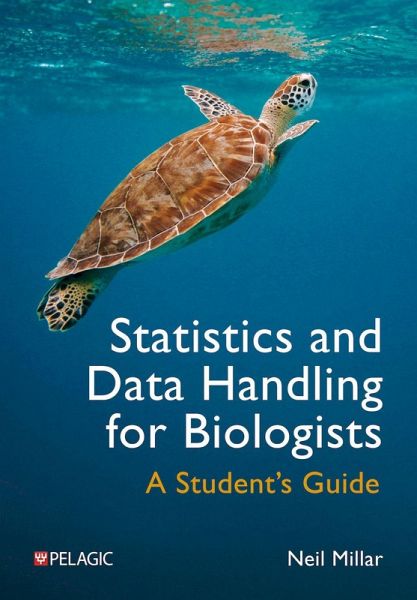
Statistics and Data Handling for Biologists (eBook, ePUB)
A Student's Guide
Versandkostenfrei!
Erscheint vor. 20.01.26
31,95 €
inkl. MwSt.
Unser Service für Vorbesteller - dein Vorteil ohne Risiko:
Sollten wir den Preis dieses Artikels vor dem Erscheinungsdatum senken, werden wir dir den Artikel bei der Auslieferung automatisch zum günstigeren Preis berechnen.
Weitere Ausgaben:

PAYBACK Punkte
16 °P sammeln!
An accessible and authoritative introduction to data handling and analysis for biology students-requiring no previous experience of statistics.This book serves as a practical and thorough guide to statistics and data analysis, specifically tailored to the biological sciences. Written in straightforward language, it makes data analysis easy to understand for biology students with no previous knowledge of statistics - or any particular enthusiasm for mathematics.The book shows students how to maintain focus on the biological meaning of their data analysis, rather than getting bogged down in tech...
An accessible and authoritative introduction to data handling and analysis for biology students-requiring no previous experience of statistics.
This book serves as a practical and thorough guide to statistics and data analysis, specifically tailored to the biological sciences. Written in straightforward language, it makes data analysis easy to understand for biology students with no previous knowledge of statistics - or any particular enthusiasm for mathematics.
The book shows students how to maintain focus on the biological meaning of their data analysis, rather than getting bogged down in technical mathematics, by using software such as Excel, Real Statistics (a free add-on for Excel) and jamovi (an easy-to-use front end for R). It also introduces simple strategies to make biological data analysis more reliable and to tackle the 'reproducibility crisis'. These strategies include power analysis to choose suitable sample sizes; estimating the true probability of the null hypothesis from the p-value; and a 'traffic light' system to determine statistical significance.
Introductory chapters cover SI units and basic mathematics, study design, descriptive statistics, and presenting results in tables and charts, including a detailed discussion of the different kinds of biological investigation, data types, and uncertainty-essential for choosing the correct charts and tests to present and analyse data. There is also a comprehensive introduction to statistical tests, including effect size, how to determine statistical significance without making false-positive errors, and how to more easily draw out useful conclusions. This is followed by demonstrations of over 20 statistical tests, with worked examples for each, and an additional 70 practice questions with answers. Appendices include greater detail on how to carry out data analysis using calculators, spreadsheets and statistical software.
This book serves as a practical and thorough guide to statistics and data analysis, specifically tailored to the biological sciences. Written in straightforward language, it makes data analysis easy to understand for biology students with no previous knowledge of statistics - or any particular enthusiasm for mathematics.
The book shows students how to maintain focus on the biological meaning of their data analysis, rather than getting bogged down in technical mathematics, by using software such as Excel, Real Statistics (a free add-on for Excel) and jamovi (an easy-to-use front end for R). It also introduces simple strategies to make biological data analysis more reliable and to tackle the 'reproducibility crisis'. These strategies include power analysis to choose suitable sample sizes; estimating the true probability of the null hypothesis from the p-value; and a 'traffic light' system to determine statistical significance.
Introductory chapters cover SI units and basic mathematics, study design, descriptive statistics, and presenting results in tables and charts, including a detailed discussion of the different kinds of biological investigation, data types, and uncertainty-essential for choosing the correct charts and tests to present and analyse data. There is also a comprehensive introduction to statistical tests, including effect size, how to determine statistical significance without making false-positive errors, and how to more easily draw out useful conclusions. This is followed by demonstrations of over 20 statistical tests, with worked examples for each, and an additional 70 practice questions with answers. Appendices include greater detail on how to carry out data analysis using calculators, spreadsheets and statistical software.
Dieser Download kann aus rechtlichen Gründen nur mit Rechnungsadresse in A, D ausgeliefert werden.





